XFX 8600GT and 8600 GTS XXX Edition Video Cards
The XFX 8600 GT XXX Edition
The little brother to the XFX GeForce 8600GTS XXX Edition is the XFX GeForce 8600GT XXX Edition, which is identical to the 8600GTS other than the fact it has lower clock frequencies. The standard XFX GeForce 8600GT (part number PV-T84J-UDF) has a core clock (including dispatch, texture units, and ROP units) of 540MHz, while the XFX GeForce 8600GT XXX Edition (Part number PV-T84J-UDD) has a core clock of 620MHz. Other than a core increase of 80MHz the memory speed has been increased from 1.4GHz to 1.6GHz, which is a nice 200MHz speed boost. The standard XFX GeForce 8600 GT has 32 stream processors that operate at 1190MHz, while these 32 stream processors on the XXX version are overclocked up to 1355MHz. Basically the core clock, memory clock, and shader clock speeds have all been increased on the XXX version. The Manufacturer Suggested Retail Price (MSRP) on the standard XFX GeForce 8600GT is set at $149.99, while the MSRP on the overclocked XFX GeForce 8600GT is $20 higher at $169.99. For an extra $20 you will be able to get a card that is tested to operate at higher frequencies and this is the card that we have in for review.
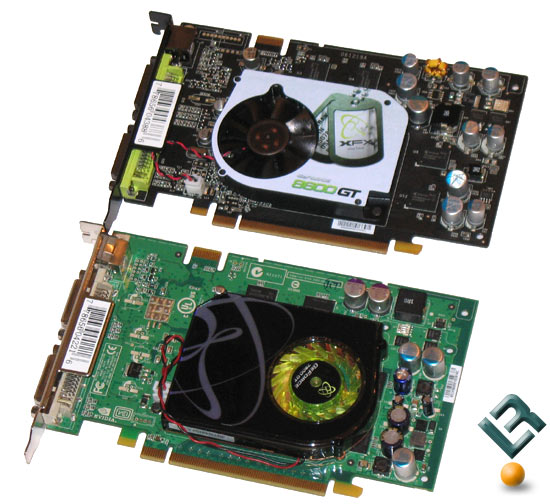
The XFX GeForce 8600 GT is a single slot design that requires no additional power connector for operation. This makes the board very energy efficient as it has a maximum power draw of just 43 watts. The XFX GeForce 7600 GT has a is maximum power draw of 65 watts while the GeForce 6600 GT is 70 watts. For the third generation in a row NVIDIA has been able to decrease the power consumption on their mainstream video cards while adding features and improving performance, which is amazing and something for them to brag about.
The XFX GeForce 8600GT XXX uses a black printed circuit board that looks great when compared to the XFX GeForce 7600GT that is pictured below it. If you look really close at the picture above you will notice that the 8600GT is about one eigth of an inch shorter than the 7600GT. The card is 6.9″ long and just 4.4″ tall for those wondering if it will fit in a custom case or small form factor computer.
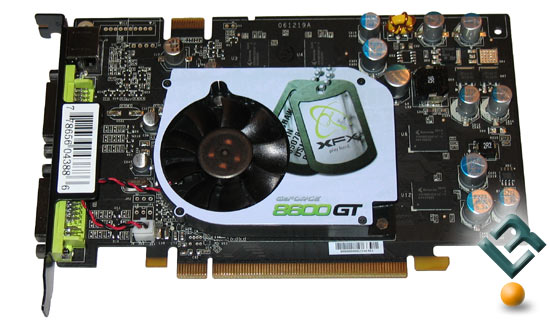
The XFX GeForce 8600GT features a pair of dual-link DVI-I outputs for connection to analog and digital PC monitors and HDTVs, a 7-pin analog video out port that supports S-Video directly, plus composite and component (YPrPb) outputs via an optional dongle. XFX did not enable HDCP and HDMI support, which is optional on the GeForce 8600GT. With dual-link DVI-I outputs this card is able to run resolutions of up to 2560×1600 on two LCD Monitors at the same time!
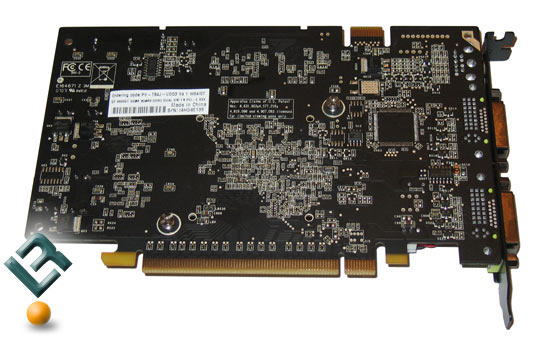
The back of the card doesn’t feature anything special, but those with a sharp eye will note that the heat sink is held on by just two screws this time around. There are still four holes present for those that want to install an aftermarket heat sink or water block for improved cooling.
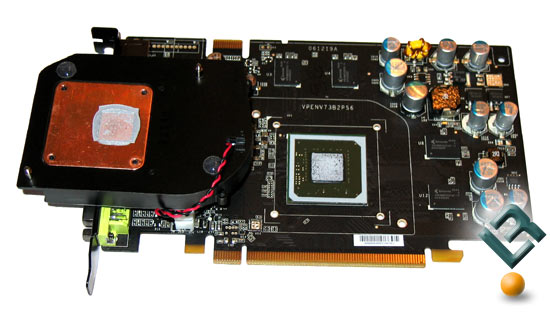
Since the heat sink is secured with just two screws, we removed it to make sure the thermal interface material was making good contact with the GPU and heat sink. As you can see in the image above the contact was perfect and the amount of thermal interface material that was applied by XFX was perfect.
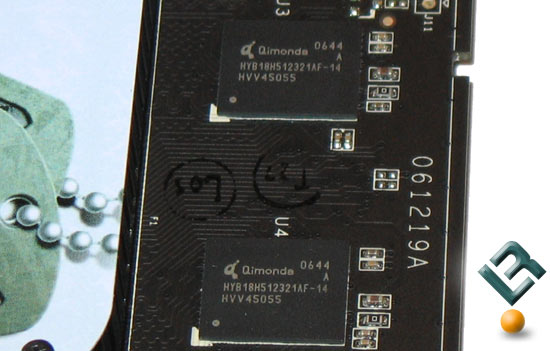
The XFX GeForce 8600GT has four Qimonda 512M-bit GDDR3 memory IC’s located on the PCB that are there to make up the 256MB of memory that the card has. These memory IC’s operate on a 128-bit bus and feature a part number of HYB18H512321AF-14, which is a part number that is slated to end production in the second quarter of 2007 as they operate at 700MHz with 2.0V and are being replaced with memory IC’s that operate at the same frequency with just 1.8V. Since the XXX edition has the memory operating at 1.6GHz, it means that these Qimonda IC’s have passed testing at higher clock speeds and are overclocked from their rated 700MHz up to 800MHz. This is a common practice in the video card industry and is nothing to be alarmed by.

Comments are closed.